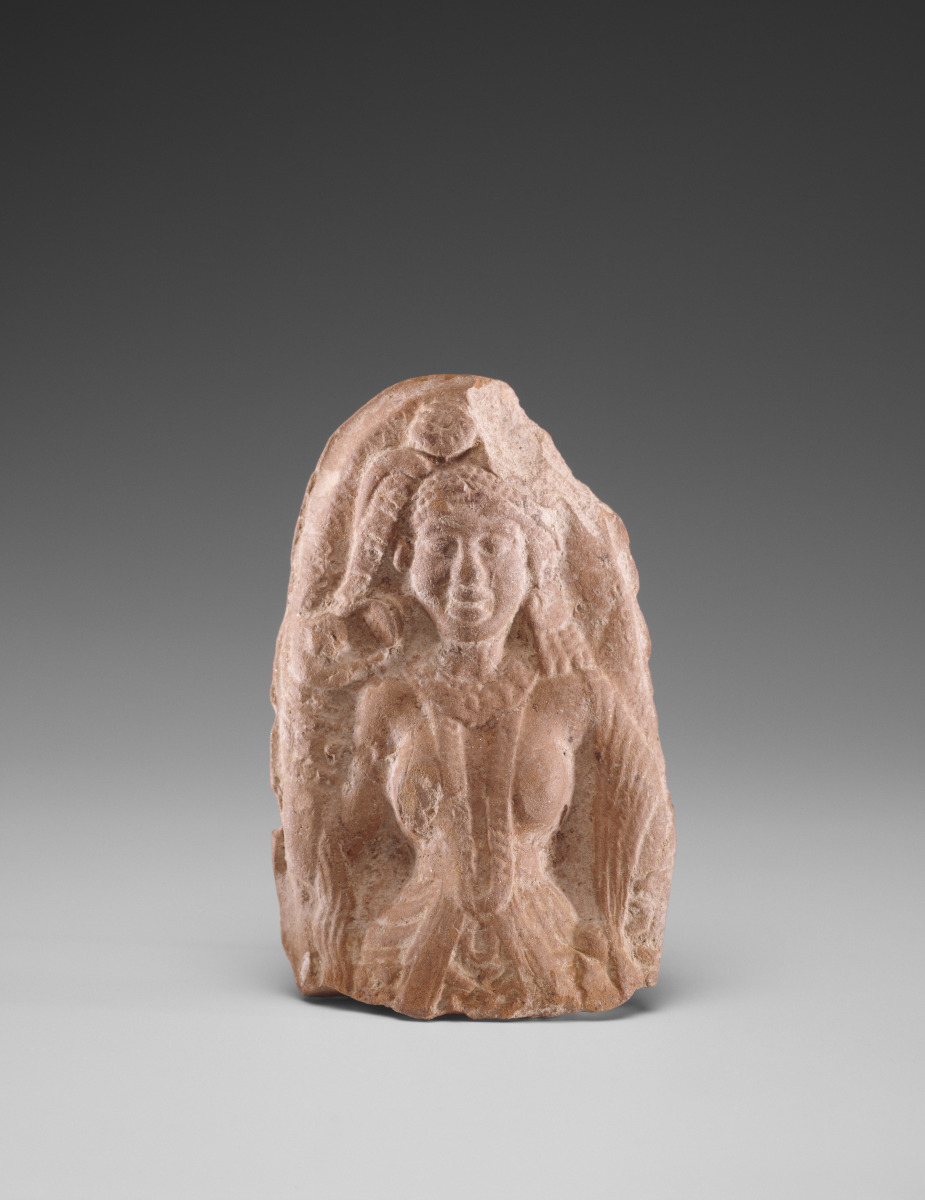
Fragmentary Plaque Depicting a Female (Primary Title)
Unknown (Artist)
(Together with 92.14)
Made by baking clay that had been pressed into a prepared mold, terra-cotta plaques were produced in great numbers in India's Ganges Valley during the Shunga period. How they were used is not clear, but many depicted standingfemale figures like the fragmentary example here. She wears a flamboyant headdress, large earrings, necklaces, and bracelets. Scarves are draped over her arms, and a lower garment with many folds is girded around her waist. Her left hand rests onher hip, while the other holds some object at shoulder level.
Plaques depicting male figures were also produced, though fewer survive. The example here is no less fashionably dressed than his female counterpart. He wears an extravagant turban,large plug earrings, necklaces, and a beaded girdle, or belt. His arms are positioned much like hers, and a long scarf falls from them in folds at his sides. These sculptures are badly worn. Originally, however, their surfaces would have been intricately detailed. Shunga-period sculptors worked in a highly descriptive and precise manner.
Made by baking clay that had been pressed into a prepared mold, terra-cotta plaques were produced in great numbers in India's Ganges Valley during the Shunga period. How they were used is not clear, but many depicted standingfemale figures like the fragmentary example here. She wears a flamboyant headdress, large earrings, necklaces, and bracelets. Scarves are draped over her arms, and a lower garment with many folds is girded around her waist. Her left hand rests onher hip, while the other holds some object at shoulder level.
Plaques depicting male figures were also produced, though fewer survive. The example here is no less fashionably dressed than his female counterpart. He wears an extravagant turban,large plug earrings, necklaces, and a beaded girdle, or belt. His arms are positioned much like hers, and a long scarf falls from them in folds at his sides. These sculptures are badly worn. Originally, however, their surfaces would have been intricately detailed. Shunga-period sculptors worked in a highly descriptive and precise manner.
Shunga Period
Gift of Mr. and Mrs. Edward W. M. Bryant
Image released via Creative Commons CC-BY-NC
Some object records are not complete and do not reflect VMFA's full and current knowledge. VMFA makes routine updates as records are reviewed and enhanced.

